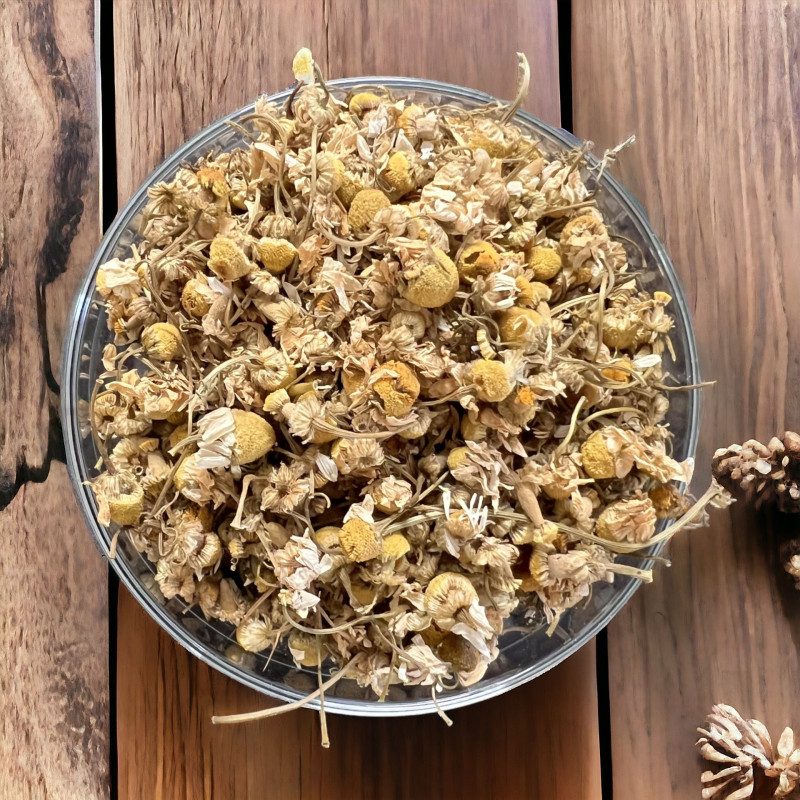
Reference: bleuet


Also called German chamomile, it is more pleasant to drink than Roman chamomile as it is not bitter!
It can help improve digestion and sleep and even enhance the blond tones in your hair.
 Delivery
Delivery
Mondial Relay
 Returns
Returns
See conditions
 Payments
Payments
100% secure
- Livré en sachet refermable -
Uses in Cooking and Beyond
It is the plant's flowers that are used, whether in teas, externally, or for essential oil extraction.
Internal Uses (Teas): Known for its anti-inflammatory effects (especially for digestive issues), antioxidant properties, mild bactericidal action, anxiety relief, and antiparasitic qualities. To prepare, steep one tablespoon of flowers in about 20 cl of boiling water for 10 minutes. For digestive issues, drink one cup several times a day; for sleep troubles, drink one or two cups around 20 minutes before bedtime.
External Uses (Decoction): Anti-inflammatory, soothing (for cracks, abrasions, insect bites), helpful for eye irritation (from smoke, prolonged visual effort, or exposure to chlorinated sea or pool water), healing, and anti-allergic. To prepare, boil 100 g of dried flowers in 1 liter of water for 20 minutes. Strain and apply to the areas to be treated.
In Cultivation: It is valuable to plant chamomile among other plants for its numerous beneficial actions:
Who am I?
Origin: Egypt
Scientific name: Matricaria recutita
Other names: Matricaria, German chamomile, blue chamomile, false chamomile, wild chamomile, common chamomile, sun eye, canomele, ox-eye chamomile, truncated matricaria.
German chamomile is an annual plant from the Asteraceae family with upright stems reaching over 50 cm. The flowers are actually capitula, meaning what appears as a single flower is a grouping of small flowers. Together, they form a yellow center bordered by white petals. The "flowers" (capitula) bloom from May to November, emitting a unique, rather strong fragrance. The leaves are highly divided.
Matricaria is widely found across Europe, the Middle East, Central Asia, and in some regions of China and North Africa. It has also naturalized in Australia, North and South America, and was introduced over 200 years ago to India. It often grows along paths, in vacant lots, or on cultivated but fertile grounds.
Do not confuse it with Roman chamomile, which is bitter—a key difference between the two!
It has been used since antiquity in Egypt, Greece, and ancient Rome.
Data sheet
 CLAUDE N.
CLAUDE N.
bon produit

 CLAUDE N.
CLAUDE N.
bon produit

Reference: bleuet
Reference: camomilleRom
Reference: souci
Reference: rosepetale
Reference: jasmin
Reference: souci
Reference: bleuet
Reference: 112390010
Reference: mauve
Reference: 408190301
Reference: camomilleRom
Reference: 10M6810601
Reference: rosepetale

Also called German chamomile, it is more pleasant to drink than Roman chamomile as it is not bitter!
It can help improve digestion and sleep and even enhance the blond tones in your hair.